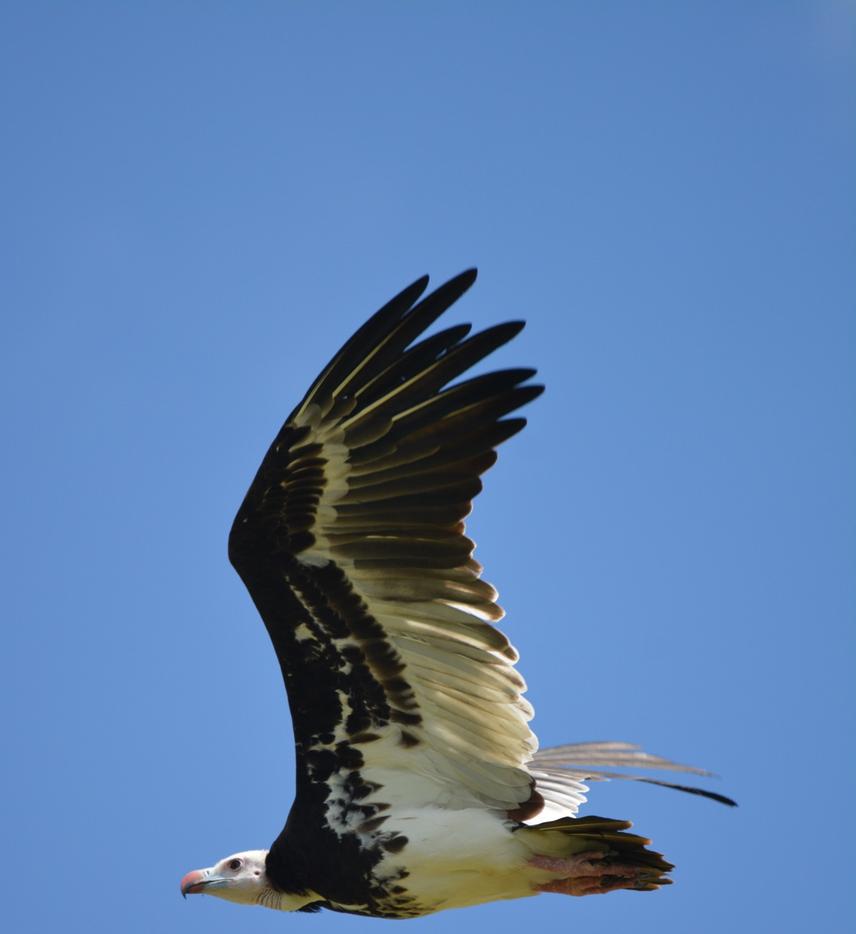Rochelle Katlego Mphetlhe
Other projects
This project will quantify the population trends of endangered raptor species in southern Botswana and combine these data with the collected in the North of the country by Garbett (2018) to ultimately describe the status and trends for raptor species in the whole of Botswana. We will collect environmental data to identify potential drivers of decline in raptor densities that have occurred in the southern part of Botswana and for which species. Change in land use can be a potential driver of decline, as land use influences the type of activities taking place and these activities can affect raptors negatively. For example, increased agricultural land use is likely to lead to an increase in human wildlife conflict and then potential use of poisons against wildlife. We will also raise the awareness in the Zutshwa and Ngwatle communities by improving/ enhancing their knowledge of raptors and conservation issues for them.

One of the raptors observed during road surveys, the White-headed vulture is listed as Critically endangered by the IUCN red list and it is an uncommon resident in Botswana.
A recent review of the conservation status and threats to raptors has shown that many populations are in decline globally. In this project, we will repeat raptor road counts to determine the density of raptors in southern Botswana. A similar study was first done in 1995 by Mark Herremans, repeating these raptor road surveys will allow us to determine accurate trends for four species of vultures in Botswana and other raptor species of global conservation concern, such as the steppe eagle which is listed as endangered, the near threatened secretary bird and martial eagle among others. The aim is to identify environmental correlates of these trends to understand what environmental factors have influenced them, the results from these analyses will identify targeted research or conservation actions that will help these threatened species. Our results may reinforce the dire conservation status of African raptors and the urgent need for swift conservation actions. The most prevalent threat to scavenging raptors in Africa and for vultures is illegal poisoning (whereby people lace carcasses with poison). Those raptors that rely heavily or wholly on carrion for food can be killed in large numbers through poisoning, poisoning by poachers is also an increasing danger to scavenging raptors, threatening particularly individuals inside protected areas.
Community education is required in Wildlife Management Areas (WMAs) where two remote communities are located, in the South Western part of Botswana. Namely Ngwatle in WMA KD1, and Zutshwa in WMA KD2. Zutshwa has a population of around 537 residents and Ngwatle around 283. These WMAs contain abundant wildlife and birdlife and are hugely important as they provide a buffer for the Kalahari Transfontier Park. Our work will help the communities to enhance their knowledge on raptors through presentations to Adult Conservation Groups that have been set up recently in Ngwatle and Zutshwa with the support of Kalahari Research and Conservation. The presentations will be about the work we are doing with Raptors Botswana with some information about raptors generally, how to identify them, some facts about them and conservation issues. We will take members from each group into the field for a drive looking for raptors to expose them to the real and live raptors that they always hear of. We will also conduct some appropriate fun activities about raptors and their conservation to the children aged between 8,9 and 10 years at the primary schools in Zutshwa and Ngwatle.